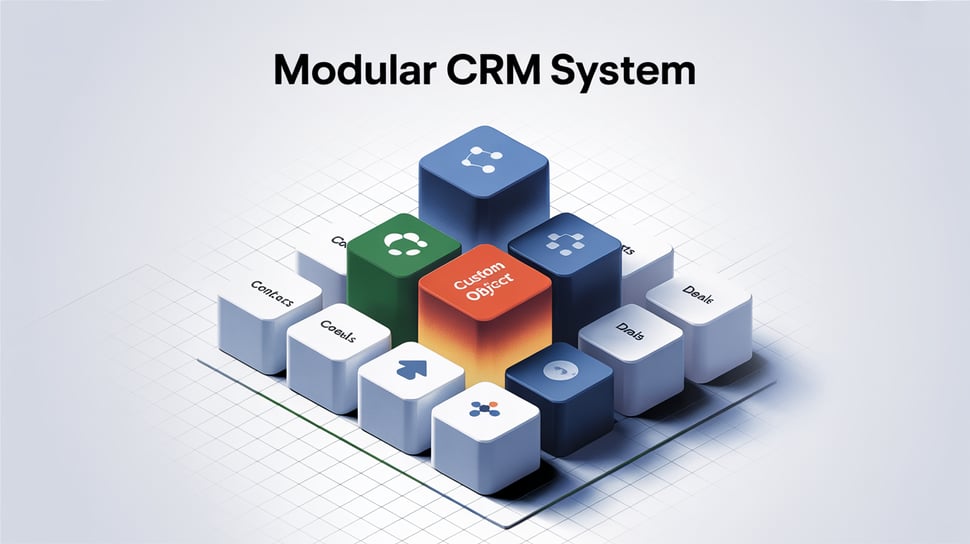
Blog Details
When and Why You Should Use Custom Objects in HubSpot
- October 31 2025
- Nikias Kray

When and Why You Should Use Custom Objects in HubSpot
HubSpot is a powerful CRM, but many businesses eventually hit a wall when trying to track data that doesn’t quite fit into Contacts, Companies, Deals, or Tickets. That’s where Custom Objects come in — a game-changer for organizations with unique business models, data structures, or customer processes.
Let’s explore why custom objects matter, when to use them, and how they’ve helped real teams solve real-world challenges.
What Are Custom Objects in HubSpot?
Custom objects allow you to create entirely new categories of data inside your CRM. These objects behave just like standard ones — you can create properties, associate them with other records, trigger workflows, and report on them.
Instead of trying to fit everything into Contacts, Companies, or Deals, you get a clean, scalable way to model your business data.
Example custom objects:
-
Subscriptions
-
Shipments
-
Events or Webinars
-
Equipment or Assets
-
Licenses or Warranties
-
Service Contracts
Learn more on HubSpot’s official documentation
When Should You Use Custom Objects?
You should consider using custom objects if:
1. Your Business Tracks Entities That Aren’t People or Companies
If you're a SaaS platform managing user licenses or a logistics provider tracking shipments, jamming that data into the “Deals” or “Tickets” object becomes messy fast.
With custom objects, you get clear structure, reporting, and automation possibilities.
2. You Need to Associate One Record Type with Many Others
Let’s say you offer a training platform and want to track student enrollments across multiple courses.
You can create a “Course Enrollment” object linked to both Contacts (students) and Courses (another custom object), allowing you to:
-
See all contacts enrolled in a course
-
Track enrollment dates, scores, completion status
-
Trigger automations when someone finishes a course
3. You’re Outgrowing Workarounds
Some teams try to “hack” the CRM using custom properties or using notes/tasks to track data. This works for a while — until:
-
Reporting breaks down
-
Data becomes inconsistent
-
Onboarding new team members becomes confusing
Custom objects replace hacks with structure.
Real-World Use Case
One of our clients at CRM Magnetics — a B2B hardware provider — needed to track physical devices leased by customers. None of HubSpot’s default objects could capture device type, serial number, warranty status, or repair history.
We helped them implement a custom object called “Asset” linked to Contacts and Companies. As a result:
-
Their support team now sees the customer + product context instantly
-
Renewals and warranties are automated via workflows
-
Reporting is clearer and faster
This solution increased customer satisfaction and cut down service resolution time by 40%.
Key Business Benefits
-
Cleaner Data Architecture: Custom objects eliminate messy properties and duplicated notes
-
Advanced Reporting: You can now filter and segment data across dimensions that matter to your business
-
Powerful Automation: Trigger actions based on custom object changes (e.g., renewal reminders)
-
Faster Team Onboarding: With clearer structures, new hires understand your CRM faster
-
Better Customer Experience: Your team sees everything they need on one screen — no toggling, no guessing
When Not to Use Custom Objects
Custom objects are powerful, but they add complexity. You might not need them if:
-
You’re a small business with a simple sales cycle
-
You can track your extra data through custom properties and standard associations
Start simple — but scale smart when the need arises.
Final Thoughts
If you're relying on spreadsheets, workarounds, or third-party systems to manage key business data, it’s time to bring that into HubSpot — and custom objects are the bridge.
At CRM Magnetics, we help companies design and implement custom objects that align with their workflows, reporting needs, and long-term growth.
Get in touch if you're ready to turn HubSpot into a CRM that mirrors your business — not the other way around.
Leave your thought here
Your email address will not be published. Required fields are marked *